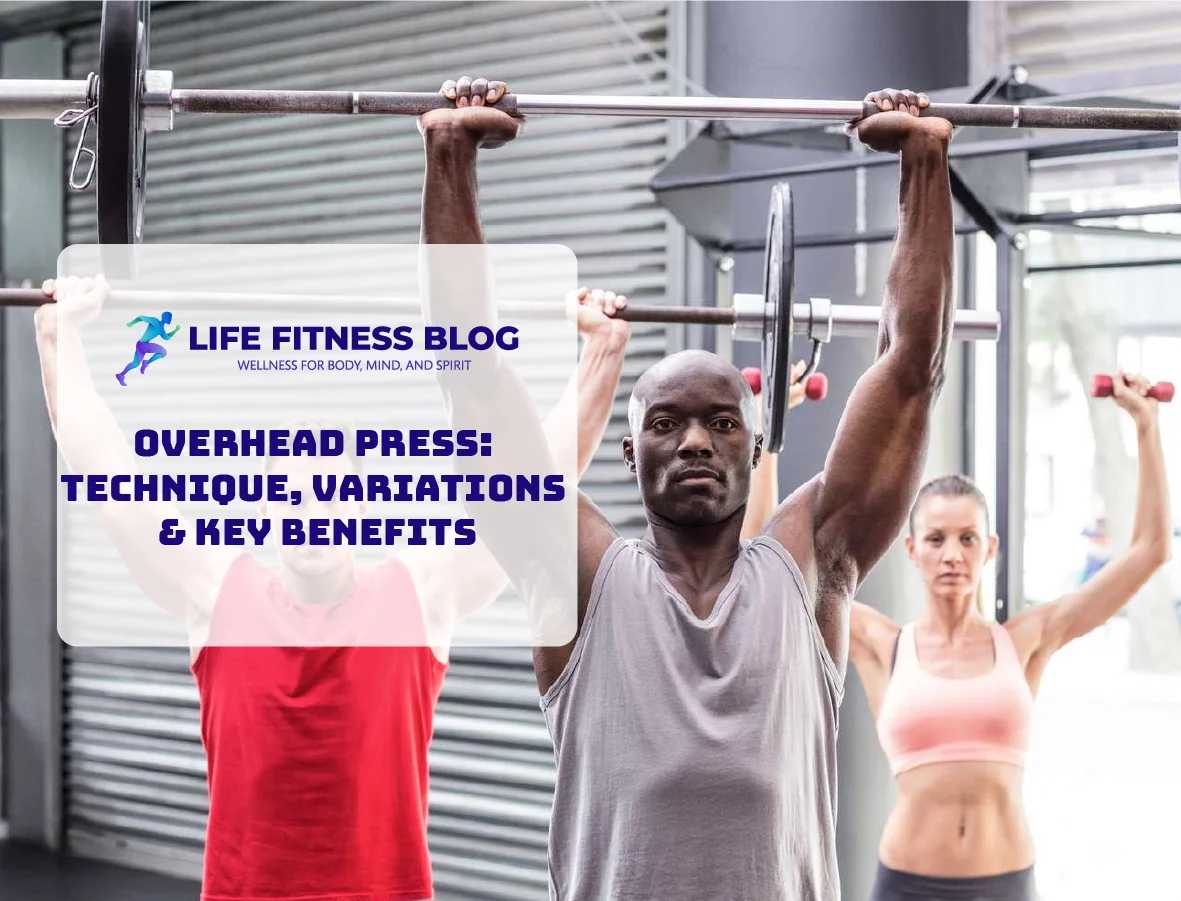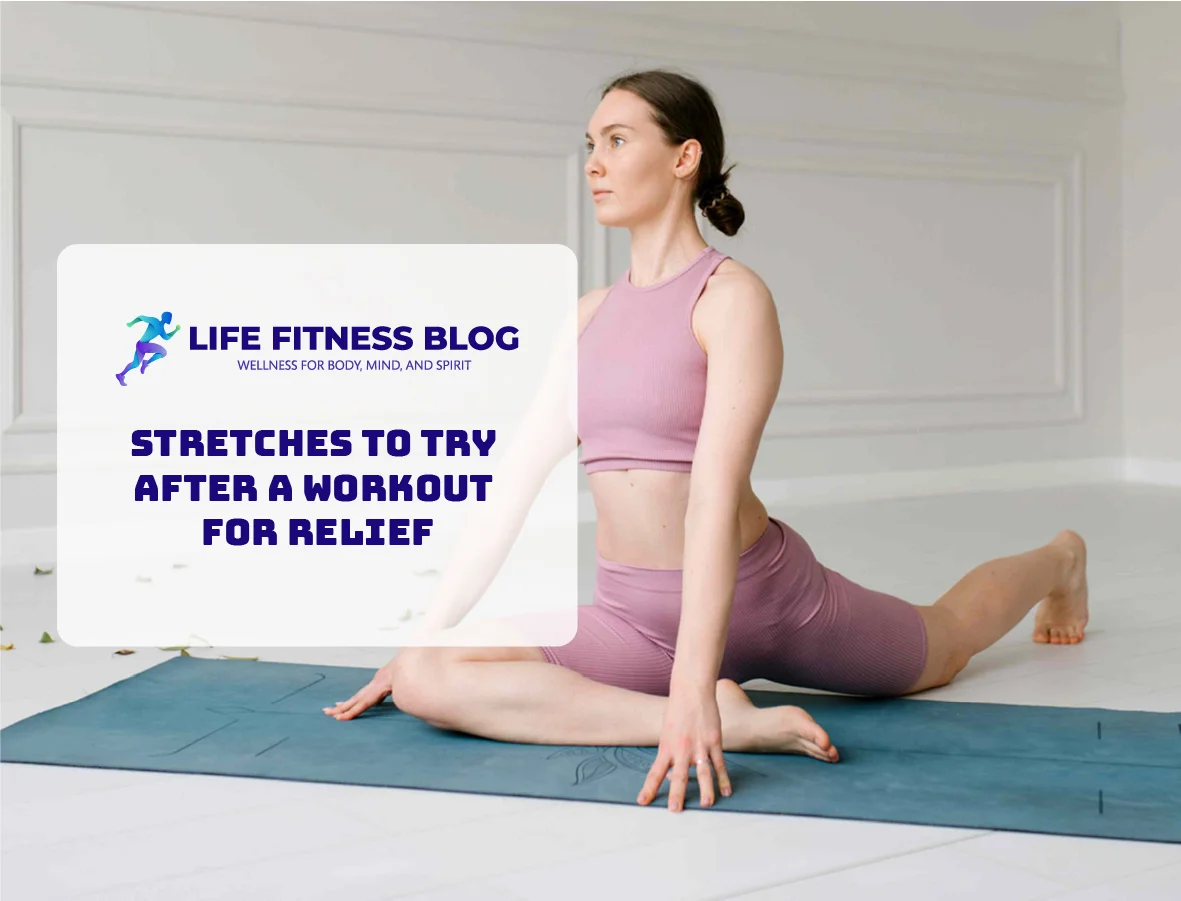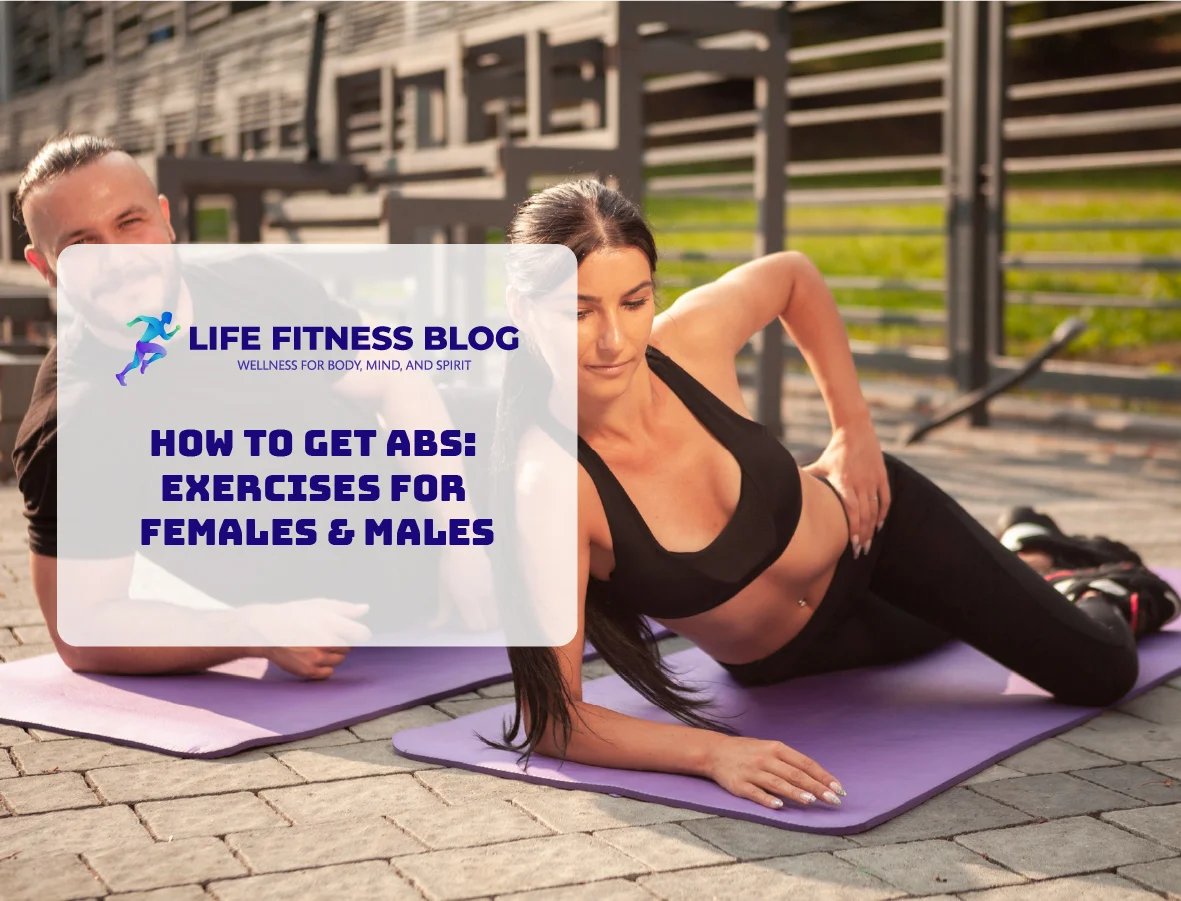Learning how to overhead press opens up a world of benefits. It targets your shoulders, triceps, and core. This exercise can be done with dumbbells, barbells, or kettlebells, making it great for building upper body strength and muscle.
Mastering the overhead press form is key. It’s essential to do it right to get the most out of this exercise. By focusing on proper technique, you’ll see big gains in strength and muscle. It’s a great move for anyone looking to improve their fitness
Table of Contents
Understanding the Overhead Press
The overhead press is a compound exercise that targets the shoulders, triceps, and core. You can do it standing or seated. These variations are key for building strength and muscle.
There are two main ways to do the overhead press: standing military press and seated shoulder press. The standing version uses a barbell or dumbbell while standing. The seated version is done while sitting on a bench or chair.
What is an Overhead Press?
An overhead press lifts a weight from your shoulders to overhead. It works your shoulders, triceps, and core. It’s great for building strength and muscle and can be done in different ways.
History of the Military Press
The military press has been around since the early days of weightlifting. It was first done with a barbell or dumbbell while standing. Over time, it evolved to include seated variations.
Equipment Needed
To do the overhead press, you need a few things. You’ll need a barbell or dumbbells, and a bench or chair for the seated version. You can also use a shoulder press machine.
Here’s what you need for the overhead press:
| Equipment | Description |
|---|---|
| Barbell or dumbbells | Used for the standing military press and seated shoulder press |
| Bench or chair | Used for the seated shoulder press |
| Shoulder press machine | Used as an alternative to the barbell or dumbbells |
Knowing about the overhead press and its variations helps you plan a workout. You can include standing military press, seated shoulder press, and more. This helps build strength and muscle.
Setting Up for the Perfect Overhead Press
To get the perfect overhead press, start with a strong base. This means a stable core and the right foot placement. It helps keep you balanced. Your hands should be shoulder-width apart, facing forward or a bit inward.
This grip helps you control the weight and keeps the press smooth.
Body positioning is key. Keep your shoulders down and away from your ears. This keeps you in a neutral position and avoids shoulder strain. Engaging your core and keeping your back straight is also important. It helps you power through the exercise and stay in control.
Here are some key points to keep in mind when setting up for the overhead press:
- Stand with your feet shoulder-width apart, with your weight evenly distributed between both feet.
- Keep your core engaged and your back straight, with your shoulders down and away from your ears.
- Grip the weight with your hands facing forward or slightly inward, and your arms at shoulder height.
By following these tips and focusing on proper overhead press form and push press technique, you’ll be able to perform the exercise safely and effectively and achieve your fitness goals.
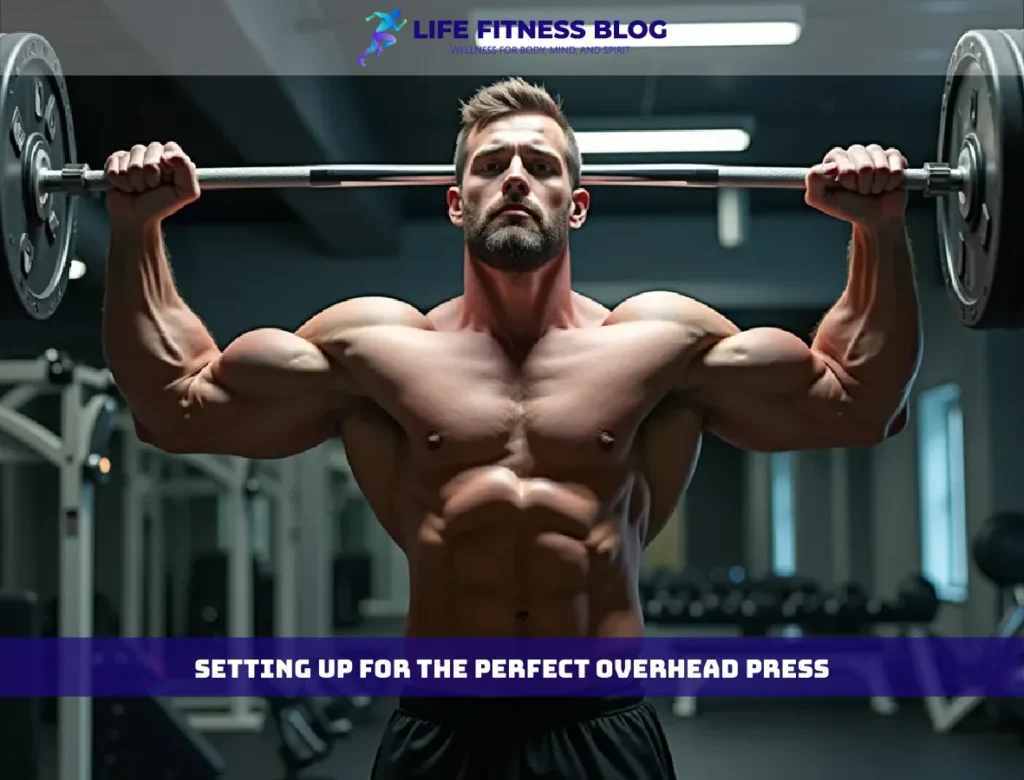
How to Overhead Press: Technique, Variations, and Benefits
To master the overhead press, you need to know the right technique. This includes the starting position, how to press, the lockout, and breathing. Beginners should focus on building a strong base. They should also engage their core and keep proper form.
The overhead press muscles worked are the shoulders, triceps, and core. This makes it a great exercise for upper body strength. For overhead press for beginners, start with a lightweight. Then, increase the load as you get stronger and better at the technique.
Starting Position
Stand with your feet shoulder-width apart. Hold the weight at shoulder height. Make sure your core is engaged and your back is straight, ready for the press.
The Press Movement
Press the weight overhead using your shoulders, triceps, and core. Don’t arch your back or use momentum to lift the weight.
Lockout Position
Reach the lockout by fully extending your arms. Hold the weight overhead. Take a deep breath in, then exhale as you lower the weight back down.
| Exercise | Muscles Worked | Benefits |
|---|---|---|
| Overhead Press | Shoulders, Triceps, Core | Builds upper body strength, improves posture |
By following these steps and focusing on proper technique, you can master the overhead press. You’ll enjoy its many benefits, like increased strength and better overall fitness.
Common Overhead Press Mistakes to Avoid
When doing the overhead press, keeping the right overhead press form is key. This helps avoid injuries and gets the most out of the exercise. A common error is using the wrong grip, stance, or body position. This can strain your joints and muscles too much.
To avoid this, stand with your feet shoulder-width apart. Also, make sure your grip is a bit wider than your shoulders.
Don’t lift too much weight. It can lead to bad form and increase injury risk. Instead, start with lighter weights and gradually add more as you get stronger. The standing military press is great for building strength and endurance. But, it needs the right form and technique to work well.
Form Errors
- Using an incorrect grip or stance
- Not engaging your core or maintaining proper body positioning
- Allowing the weight to swing or jerk, rather than using a smooth and controlled motion
Avoiding these mistakes and focusing on proper overhead press form can help you get the most benefits. It also improves your strength and fitness. Always put form and technique first. If you’re unsure, ask a qualified trainer or coach for help.
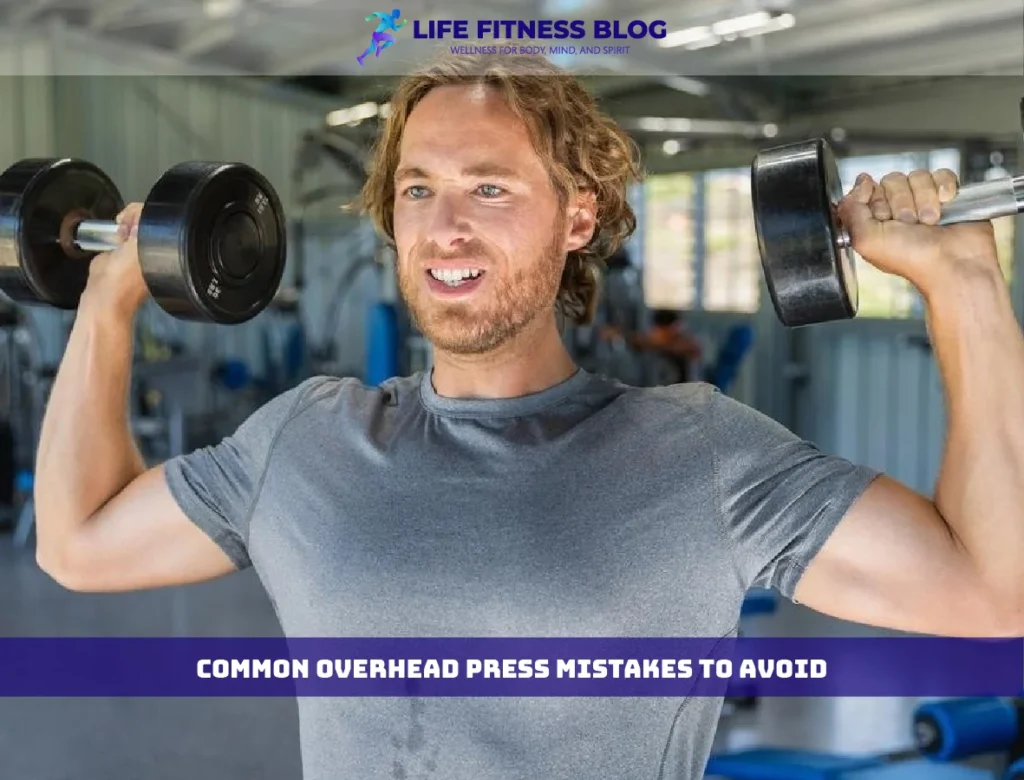
Essential Overhead Press Variations
As you get better at overhead presses, trying different variations is key. This helps you avoid getting stuck and keeps your muscles from getting too tired. For example, the seated shoulder press works different muscles and can be easier on your back.
The push press technique uses your legs to push the weight up. It lets you lift heavier weights and boosts your power. Remember to extend your hips and knees fast but keep your form right.
Here are some important overhead press variations to try:
- Seated shoulder press: targets the deltoids and trapezius muscles
- Push press: targets the entire shoulder complex and legs
- Dumbbell overhead press: targets the deltoids and trapezius muscles, and can help improve balance and coordination
Adding these variations to your workout routine keeps things interesting. It challenges you in new ways and helps you reach your strength goals.
Muscles Worked During the Overhead Press
When you do the overhead press, many muscles work together. They help extend your arms and lift the weight up. The main muscles are the deltoids, triceps, and trapezius. These muscles are key for arm extension and rotation.
Other muscles, like the rotator cuff, rhomboids, and levator scapulae, help keep the shoulder stable. The core muscles, including your abs and lower back, also play a big role. They help keep you balanced and add power to your movement. Working these muscles improves your strength and athleticism.
To get the most out of the overhead press, focus on proper technique. This means squeezing your shoulder blades, engaging your core, and extending your arms fully. Mastering the overhead press technique unlocks its full benefits. You’ll see improvements in strength, posture, and athletic performance. It’s important for both beginners and experienced lifters to learn how to do it right.
| Muscle Group | Description |
|---|---|
| Primary Muscle Groups | Deltoids, triceps, and trapezius |
| Secondary Muscle Groups | Rotator cuff, rhomboids, and levator scapulae |
| Stabilizer Muscles | Core muscles, including abs and lower back |
Programming the Overhead Press in Your Routine
To get the most out of the overhead press, it’s key to program it right in your routine. Think about how often, how much, and how hard you do it. You can do the overhead press 2-3 times a week. This lets your body recover well between workouts.
For how much, start with 3-5 sets per exercise. Choose a weight that fits your fitness level and focuses on good overhead press form.
A good routine mixes overhead press variations, like the standing military press. This keeps your workouts fun and stops you from getting stuck. Here are some tips for programming the overhead press:
- Start with a weight that lets you keep good form and technique
- Slowly add more weight as you get stronger
- Try different overhead press variations to work different muscles
- Add the standing military press for a workout that targets your whole body
By adding the overhead press to your routine and focusing on the overhead press form, you’ll boost your strength and fitness. Always put proper technique and form first, not how much weight you lift. Mix up your routine with different overhead press variations to keep it interesting and tough.
| Exercise | Frequency | Volume | Intensity |
|---|---|---|---|
| Overhead Press | 2-3 times per week | 3-5 sets per exercise | Weight based on individual fitness level |
Mobility Requirements for Safe Pressing
To safely and effectively do the overhead press, you need good mobility in some body areas. This includes your shoulders, upper back, and core. It’s key to check your mobility before starting to avoid injuries and get the most from the overhead press.
Having full shoulder movement is important for the overhead press. Your upper back also needs to move well to keep the right form. For beginners, focusing on these areas is crucial to build a solid base.
Key Mobility Requirements
- Shoulder mobility: flexion, extension, and rotation
- Thoracic spine mobility: flexion, extension, and rotation
- Core stability: strong and stable core, including the abs and lower back
Knowing and working on these mobility needs can boost your performance and lower injury risks. Always focus on the right form and technique. If unsure, get help to learn how to do the overhead press safely and effectively.
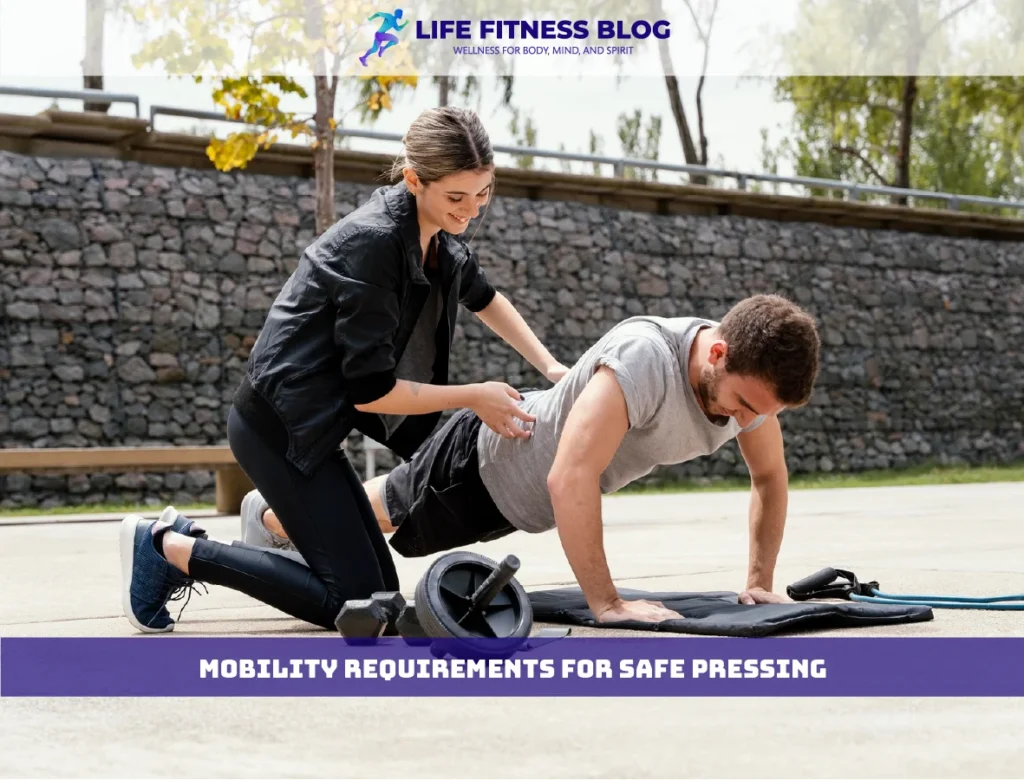
Progressive Overload Strategies
To keep improving your overhead press, you need to use progressive overload. This means you should slowly increase the challenge to your muscles. You can do this by trying different overhead press variations.
There are several ways to use progressive overload.
Weight Progression
Weight progression means lifting more weight as you get stronger. You can add a little more weight each week or do more reps with the same weight. For example, if you lift 100 pounds for 8 reps, try 105 pounds next week or do 10 reps with the same weight.
You can also use
Volume Manipulation
to challenge your muscles more. This means doing more sets and reps over time. You could do 4 sets of 10 reps instead of 3 sets of 8. Or, you could add more exercises that work the same muscles. Using the push press technique can also help improve your form and strength.
Another way is
Frequency Adjustments
, which means doing the exercise more often. You can do the overhead press more times each week or add more exercises for the same muscles. By using these strategies, you can keep getting better at your overhead press and get stronger overall.
Addressing Common Overhead Press Plateaus
As you keep working on your overhead press, you might hit a wall where you feel like you’re not getting better. This is called a plateau. To get past this, it’s key to know the overhead press benefits and how to tweak your routine to keep pushing yourself. If you’re new, learning how to overhead press right is crucial to avoid hitting a wall and staying safe.
For overhead press for beginners, start with a weight that lets you keep good form and technique. As you get more comfortable, you can slowly add more weight to keep the challenge going. Some ways to beat plateaus include:
- Switching to different exercise variations to hit different muscles
- Going up in weight to up the exercise’s intensity
- Changing your workout plan to include more reps or more often
By grasping the overhead press benefits and mastering how to overhead press, you can keep improving and dodge plateaus. Always focus on keeping the right form and technique, especially if you’re a beginner. With steady effort and patience, you can nail the overhead press and reach your fitness targets.
Conclusion:
Learning to do the overhead press well takes time, effort, and the right approach. Knowing its benefits and trying different ways to do it can help you get stronger. This way, you’ll feel more confident when you lift.
Keep practicing and work on your technique to overcome any challenges. Focus on staying flexible, getting stronger, and planning your workouts wisely. This will help you keep improving without getting hurt.
The overhead press is great for anyone, whether you’re experienced or just starting out. It’s a key exercise for building muscle, strengthening your shoulders, and boosting your upper body power. So, be ready to challenge yourself, stay committed, and see how the overhead press can make you stronger and more resilient.
Also Read: The 7 Undeniable Benefits of Kettlebell Training
FAQs
What muscles does the overhead press work?
The overhead press primarily targets the shoulders, triceps, and core, while also engaging stabilizing muscles like the rotator cuff, rhomboids, and lower back for balance and power.
How often should I include the overhead press in my workout routine?
For optimal results, perform the overhead press 2-3 times per week, allowing adequate recovery time between sessions to build strength and avoid overtraining.
What are common mistakes to avoid during the overhead press?
Avoid using improper grip or stance, lifting too much weight, and arching your back. Focus on maintaining proper form, engaging your core, and controlling the movement.
Can beginners perform the overhead press?
Yes, beginners can start with light weights and focus on mastering proper technique. Gradually increase the weight as strength and form improve to avoid injury.
What are some effective overhead press variations?
Try variations like the seated shoulder press, push press, or dumbbell overhead press to target different muscles, prevent plateaus, and keep your workouts challenging.

